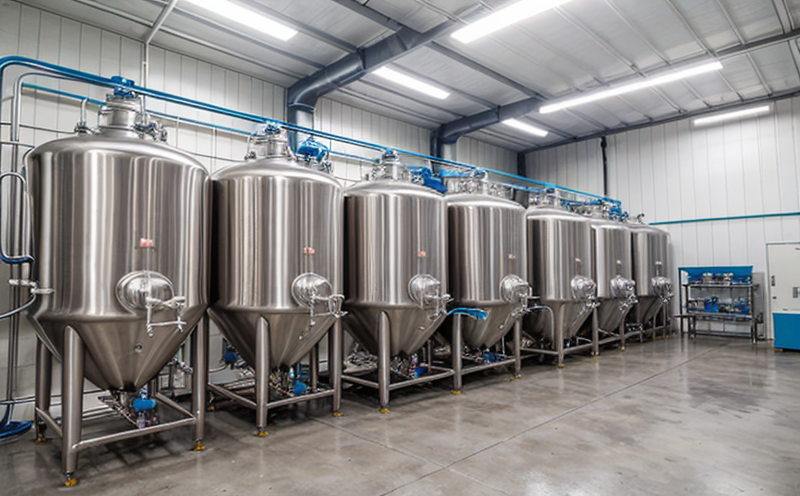AOAC 991.14 Aerobic Plate Count in Fermentation Samples
The AOAC Official Method 991.14 is a widely recognized procedure that quantifies the number of viable aerobic microorganisms present in fermentation samples. This method plays a crucial role in ensuring food safety and quality, especially for products like beverages, dairy items, and fermented foods.
Compliance with this standard ensures that manufacturers meet regulatory requirements and maintain product integrity across their supply chain. The test is particularly useful for identifying potential contamination issues early in the production process, allowing for corrective actions to be implemented promptly. This prevents costly recalls and protects consumer health by ensuring that products are safe for consumption.
The procedure involves diluting the fermentation sample and then inoculating it onto a nutrient agar medium designed to support aerobic growth of microorganisms. After incubation under controlled conditions, colonies are counted on an agar plate, providing an estimate of the total viable count (TVC). The method is robust and reliable, offering consistent results across different laboratories.
Understanding the significance of this test in the context of industrial fermentation is crucial for quality managers and R&D engineers. It underscores the importance of microbial analysis during product development and production to ensure that final products meet stringent safety standards.
The method's applicability extends beyond just ensuring food safety; it also aids in process optimization by providing insights into microbial ecology within the fermentation environment. This knowledge can lead to improvements in fermentation processes, enhancing efficiency and productivity while maintaining high-quality standards.
For procurement officers, compliance with AOAC 991.14 ensures that they are sourcing ingredients and raw materials from suppliers who meet industry best practices. This not only enhances product quality but also supports sustainable business operations by fostering transparency in the supply chain.
The methodology itself is detailed in the official publication of the Association of Official Analytical Chemists (AOAC), which sets high standards for analytical methods used globally. Adherence to this method ensures that results are comparable and reproducible, contributing significantly to the credibility of the testing process.
Industry Applications
| Industry | Description of Application |
|---|---|
| Beverage Industry | Detection and quantification of microorganisms in fermented beverages to ensure safety and quality. |
| Dairy Products | Monitoring the microbial content in dairy products during production and storage. |
| Fermentation & Biotechnology | Evaluation of microbial activity in biotechnological processes, including biofuel production. |
| Pharmaceuticals | Assessment of microbial contamination levels in pharmaceutical products during manufacturing and storage. |
| Agricultural Biotechnology | Monitoring the growth of beneficial microorganisms used in agricultural biotechnology applications. |
- Beverage Industry: Ensuring that fermented beverages meet strict hygiene standards.
- Dairy Products: Maintaining high-quality dairy products through rigorous microbial monitoring.
- Fermentation & Biotechnology: Optimizing fermentation processes for biofuel production and other biotechnological applications.
Why Choose This Test
- A robust and validated method recognized by industry leaders and regulatory bodies worldwide.
- Precision in quantifying the number of viable aerobic microorganisms, crucial for maintaining product quality.
- Supports early detection of contamination issues, enabling timely corrective actions to be taken.
- Ensures compliance with international standards and regulations, enhancing trustworthiness in the market.
- Accurate results: Provides reliable data on microbial levels, essential for quality control.
- Consistency: Ensures reproducible results across different laboratories, fostering industry-wide standardization.
- Efficiency: Facilitates streamlined production processes by providing actionable insights into microbial activity.
International Acceptance and Recognition
The AOAC Official Method 991.14 is widely accepted and recognized across the globe, with adoption in numerous countries that adhere to international standards for food safety and quality assurance. Its use ensures harmonization of testing protocols internationally, promoting consistency and comparability of results.
Many global regulatory bodies, including those within the EU, USA, Canada, and other regions, require compliance with this method as part of their certification processes. This recognition underscores its importance in maintaining high standards of food safety and quality across international borders.
The method's acceptance is particularly significant for multinational corporations that operate globally. By adhering to AOAC 991.14, these companies can ensure consistent product quality and safety standards regardless of location. This not only enhances consumer trust but also facilitates smoother regulatory compliance across different jurisdictions.





